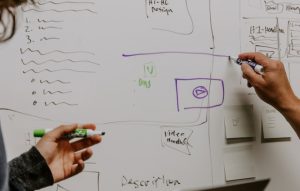12 Dipping Your Toes in OER Waters
Please note, this document is based on a presentation of the same name. During the presentation, Faculty were invited to consider a course they were teaching in the next semester that would be a good candidate for OER. A list of questions was prepared to assist with this: Dipping your toes in OER waters questions.docx

Introduction
- Open Education Resources (OER) are learning and teaching materials released by their creators under a Creative Commons License.
- A Creative Commons license works within Copyright laws as it allows creators to give permission in advance regarding how their work can be used by others.
- Generally, Creative Commons Licenses allow you to use, retain, and share the work at no cost. Some licenses also allow you to remix and modify the work to create new OER offerings.
- OER can take many forms including textbooks, lesson plans, guides, videos, music, images, simulations, and software.
- OER can benefit faculty by giving them more control over the course learning materials and increasing retention in their class and programs by providing no-cost texts.
- OER can benefit students by reducing the cost of education, providing more relevant learning materials, and allowing immediate and even early access to learning materials that can be retained for future reference.
Many Ontario colleges and universities have adopted OER textbooks in their courses. This includes replacing a publisher’s text with an existing OER text, remixing more than one OER work into a custom text, and remixing a text with original materials such as adding Canadian context. These adoptions can be considered a deep dive into OER. These require time and effort by faculty. While there is support from the CAE and Library for these adoptions, this article/presentation is about small ways you can dip your toes in the OER waters.
There are ways you can use OER to improve the learning experiences in the courses you will be teaching next semester. We can use OER to address student learning needs such as remediation, pain points, and language learning. We can also use OER to improve course learning materials including inadequate or outdated text materials, providing more voices and perspectives, and adding interactive and media objects.
Remediation/Review Materials

Think about a course that you will be teaching next semester, what skills and knowledge do you expect students to have as they begin your course? Are there gaps in skills and knowledge the many students have that hamper their learning?
Now, we do not have time to review all the skills and knowledge that students should already have but we can provide some self-directed remediation materials using OER sources and Blackboard.
For example, if you are introducing formulas relevant to your discipline, you would expect students to have basic math skills including order of operations. You may have noticed in past courses that students who have forgotten the order of operation rules have more difficulty tackling formulas. In this example of Math, we already have a listing of OER learning materials for common first year math topics available through the college website. It would be quite easy to create a folder in Blackboard and include links to materials students can use to review math concepts that they will need in the course. You can also check out a new resource from eCampus Ontario called Games with offers lessons in common cartridge format for easy installation into Blackboard
You may want to include videos, guides or instruction sheets that review common gaps or choose a textbook that covers the concepts of a pre-requisite for students to use as a resource.
Addressing Pain Points

You can use a similar approach for the pain points in your course. These are the areas where many of your students will struggle to understand a concept or gain a skill. We call these pain points. Think about your course again, can you think of two or three areas your students will struggle?
For these pain points you can use OER to provide materials for your student to use in addition to your lecture, class activities, and common text.
These materials could be a chapter of an OER text that uses different wording and examples as the traditional text. It could be a video that explains the concept or demonstrates the skill. It could be the addition of an interactive tutorial or simulation. Again, you can use Blackboard to release these materials at the start of the week you introduce the topic.
Industry/Program Language Learning
OER can also be used for language learning. In some cases, this may be English Language learning but do not limit language needs. It can also be learning the language of your discipline. Knowing what industry specific terms sound like and mean can help many students get more out of your lectures.
You could use an OER text and copy the terms and definitions into a h5p drag-and-drop exercise to present at the beginning of the week to activate prior knowledge and review important terms students may read or hear in the unit. Example from Introduction to Business. There are flip card h5p exercises that provide terms and definitions with an audio file of how the word is pronounced.
Enhance your current textbook and learning materials

Bring your course back to mind and consider the textbooks and learning materials you currently have available. Are you dissatisfied with how the current text meets some of your learning outcomes? Would you like to bring in different voices and perspectives? Would videos, self-directed tutorials or interactive exercises enhance learning? OER may be able to help in these areas as well.
Perhaps your current textbook does not cover materials important to your course or does so in an unsatisfactory manner. You can use OER materials to address the gap by selecting a chapter of an OER text that is better suited and assign it as a required reading. You can use OER materials to provide up to date information if your text is outdated.
You could select a supplemental OER text to provide a distinct perspective or to provide some appropriate reading materials to students who are unable (or unwilling) to purchase the text. This can also be a way to test out an OER you are considering adopting in the future. As OER are typically electronic texts, it can be used with Microsoft Immersive Reader and be read aloud to students.
You can also use OER materials to add interactive and media objects. There are a variety of instructional videos available through YouTube, Vimeo, TedEd, and more. There are OER tutorials available on diverse topics include Work Integrated Learning, APA Citations, and Excel – Conditional Formating.
H5p Studio from eCampus Ontario is a platform where you can create your own interactive objects or use creative commons licensed objects created by other faculty.
The H5P interactive object will present 13 questions about a course of your choosing. You can export your answers and print when complete:
Support for OER
If you want to learn more about OER, view our library subject guide on OER and the OER Toolkit available through The Learning Portal. You can contact library staff for help with finding OER in addition to doing some research on your own. While not considered OER, the library does offer videos, e-texts and more that can also be used to enhance your course.
We will add resources to the CAE webpages with more about teaching and learning with OER soon.

